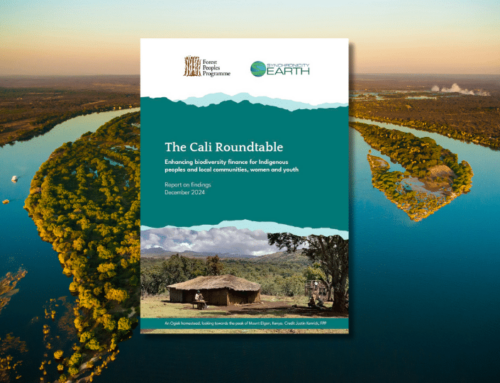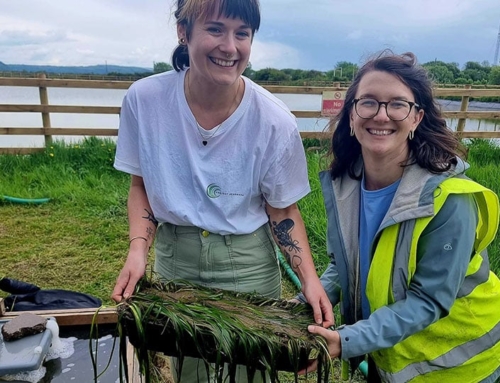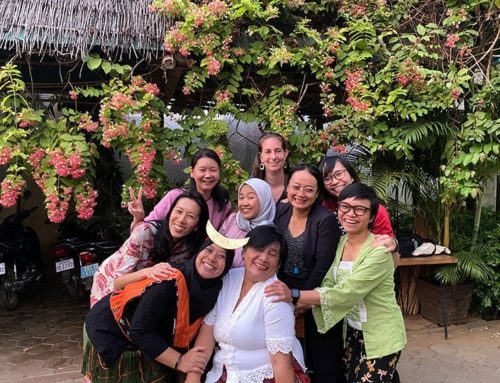Synchronicity Earth recently took part in a capacity building conference hosted at ZSL London Zoo. Katy Scholfield, our Co-Head of Programmes, was invited to speak at a session on innovative partnerships for capacity building. We believe in providing long-term, flexible support to our partners. In many cases, this means providing support for capacity development to help organisations reach their potential and amplify their impact. Capacity building involves investing both time and financial resources in organisations and individuals in the knowledge that this is essential to the organisation achieving its mission in the long term.
Here we look at three very different approaches we are taking to enhance the capacity of organisations and individuals to address critical conservation challenges.
White-bellied Heron: Supporting individuals to develop technical skills and expertise to address conservation of a threatened species.
Synchronicity Earth has been directly engaging in capacity building for individuals through our White-bellied Heron programme. There are thought to be a maximum of 250 individuals left of the White-bellied Heron, and its only known global stronghold is in Bhutan. As part of our White-bellied Heron programme, which has been active for five years, we have specifically focused on directly building the capacity of the key individuals at the Royal Society for the Protection of Nature Bhutan (RSPN), our in-country partner. To this end, we have developed partnerships with Prague and ZLIN zoos in the Czech Republic to host three RSPN staff members at their facilities and provide direct training in captive breeding of heron and crane species. This is a fundamental step in the conservation of the species, and RSPN is now in the process of building the world’s first White-bellied Heron captive breeding centre. We have also part-funded another RSPN staff member, Indra Acharja, to study for a Master’s degree in Forest Science from Yale University. Indra graduated earlier this year and is now back in Bhutan working with the RSPN team to continue their conservation and research programmes on the White-bellied Heron. We have also supported training for RSPN staff in satellite tagging of WBH birds, the use of cameras to record nesting behaviour, and other field methodologies for monitoring this incredibly important population of birds.
Shoal: Hosting a new organisation addressing a critical gap in conservation action.
Shoal is a new global partnership to conserve fish and other threatened freshwater species in their habitats. It aims to bring together those with a personal or business interest in fish or freshwater environments to work together to address one of nature’s most urgent conservation challenges. As a new initiative, only launched in March this year, Shoal does not yet have the capacity to operate as an independent organisation. This is often an issue in the conservation sector. Good ideas are not taken forward because of a lack of dedicated staff time or institutional support. Synchronicity Earth therefore acts as the host organisation for the Shoal partnership, with Shoal’s work aligning with the objectives of our freshwater programme.
In this context, capacity development means hosting Shoal’s Executive Director, providing staff time and financial resources to support Shoal’s development, as well as administrative, logistical and organisational support. This is a very ‘hands-on’ form of capacity development but is something that Synchronicity Earth is set up to do – for example it has also played a key role in the development of the Amphibian Survival Alliance. Without this sort of institutional support or very significant financial backing it can be extremely difficult for these new, innovative, and much-needed conservation initiatives to get off the ground.
Asian Species Action Partnership: Working with a key partner to support capacity development of organisations and individuals.
This year, Synchronicity Earth launched our newest programme – the Asian Species Programme. In the development of this programme, our research identified a concerning lack of conservation attention on dozens of species in Southeast Asia that are on the brink of extinction. Much of the conservation funding and action in the region focuses on a handful of well-known species, while numerous others are being completely overlooked. We recognised the need to support an increase in both the number and the capacity of organisations working on species conservation in Southeast Asia. In this situation, we chose to work with a partner, the Asian Species Action Partnership (ASAP), to provide support to conservation organisations in Southeast Asia. The model of this partnership is to bring together organisations that are working to conserve the most threatened species in the region and increase their effectiveness and the power of the work they are doing. To ensure that their capacity development programme responds to the needs of conservationists in Southeast Asia, ASAP conducted an analysis of capacity gaps in the region, identifying key areas where groups are requesting additional support and tailoring their capacity support to meet these needs.
As these three examples show, capacity building is a catch-all term which encompasses an array of different activities and approaches. The common thread which weaves through these examples and many, many more is that they all respond to needs identified by conservation experts and practitioners and they all create the conditions necessary for conservation to be truly effective.
Capacity building is often a long-term investment, but it is one which is just as important and rewarding as supporting the implementation of the conservation actions themselves.





